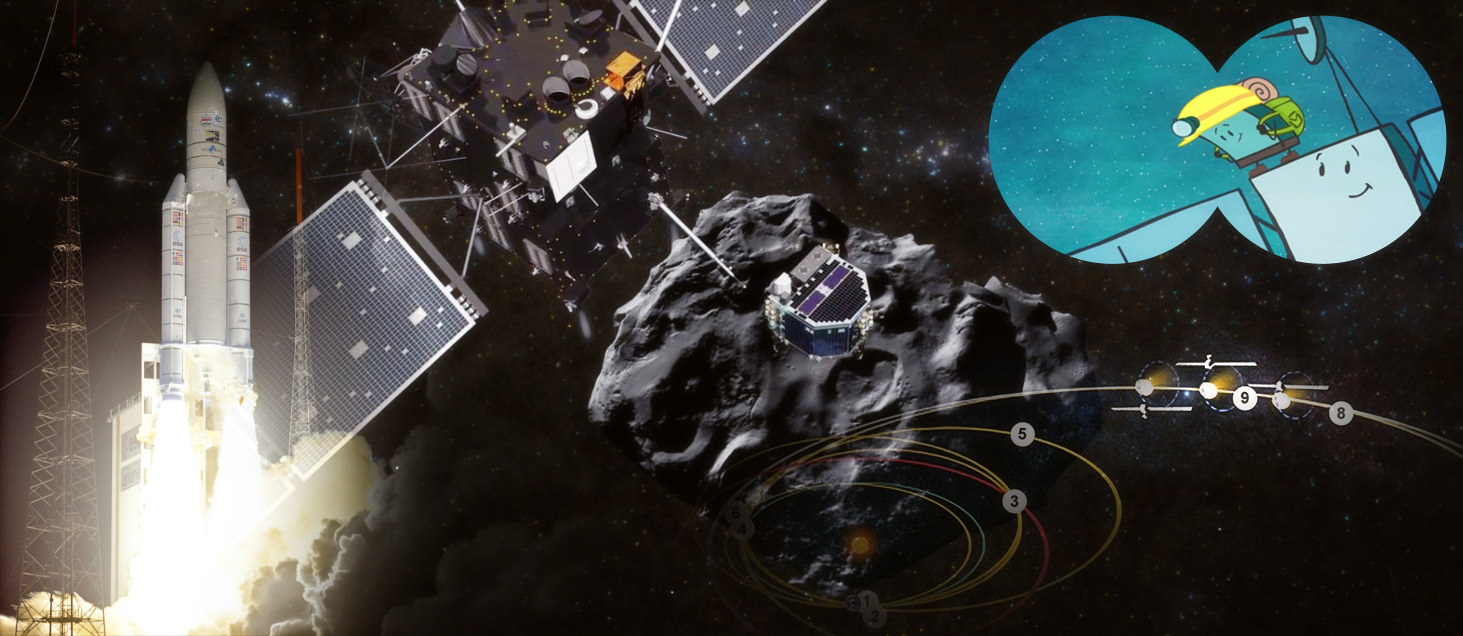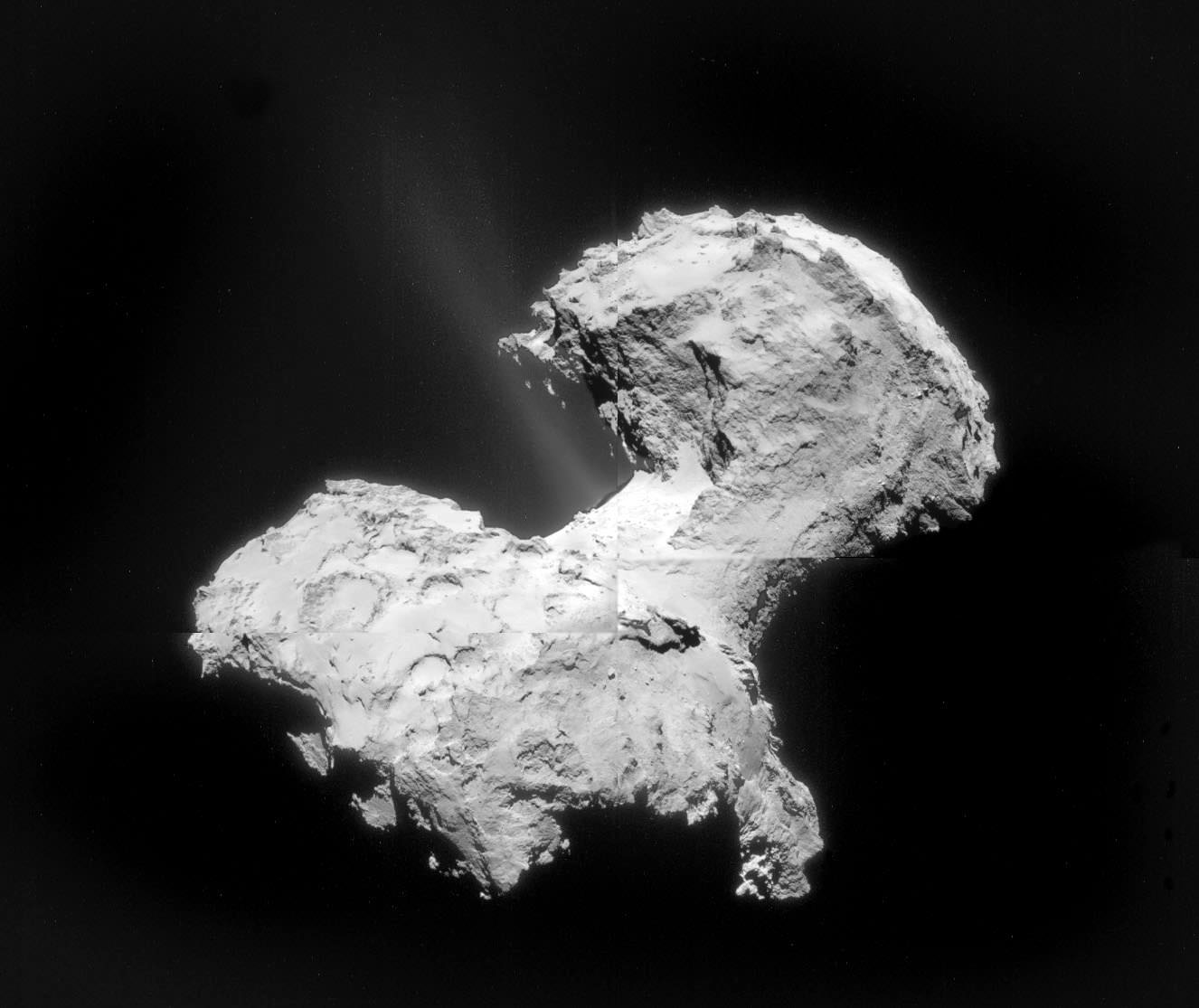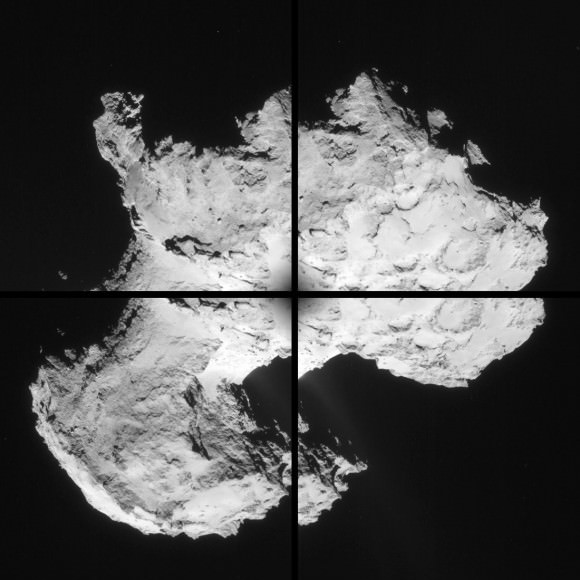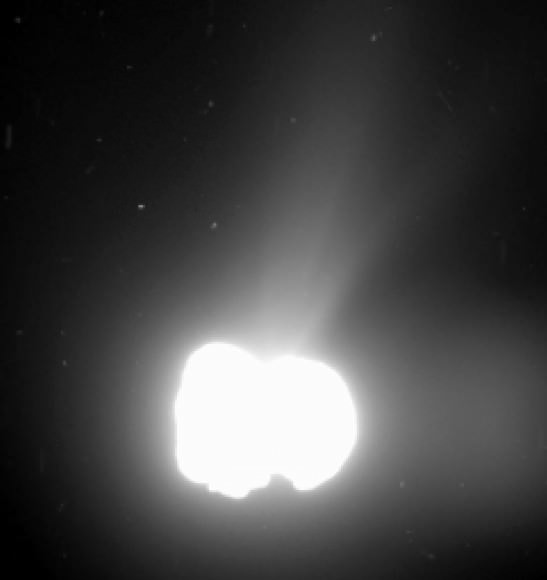We are now in the final hours before Rosetta’s Philae lander is released to attempt a first-ever landing on a comet. At 9:03 GMT (1:03 AM PST) on Wednesday, November 12, 2014, Philae will be released and directed towards the surface of comet 67P/Churyumov–Gerasimenko. 7 hours later, the lander will touch down.
Below you’ll find a timeline of events, info on how to watch the landing, and an overview of how the landing will (hopefully) work.
In human affairs, we build contingencies for missteps, failures. With spacecraft, engineers try to eliminate all single point failures and likewise have contingency plans. The landing of a spacecraft, be it on Mars, Earth, or the Moon, always involves unavoidable single point failures and points of no return, and with comet 67P/Churyumov–Gerasimenko, Rosetta’s Philae lander is no exception.
Rosetta’s and Philae’s software and hardware must work near flawlessly to give Philae the best chance possible of landing safely. And even with flawless execution, it all depends on Philae’s intercepting a good landing spot on the surface. Philae’s trajectory is ballistic on this one way trip to a comet’s surface. It’s like a 1 mile per hour bullet. Once fired, it’s on its own, and for Philae, its trajectory could lead to a pristine flat step or it could be crevasse, ledge, or sharp rock.
Live European Space Agency Coverage also Main Page Live Feed
Watch ESA’s live feed:
The accuracy of the landing is critical but it has left a 1 square kilometer of uncertainty. For this reason, engineers and scientists had to survey the whole surface for the most mild features. Comet 67P has few areas that are not extreme in one way or another. Site J, now called Agilkia, is one such site.
When first announced in late September, the time of release was 08:35 GMT (12:35 AM PST). Now the time is 9:03 GMT. The engineers and computer scientists have had six weeks to further refine their trajectory. It’s a complicated calculation that has required running the computer simulation of the descent backwards. Backwards because they can set a landing time then run Philae backwards to the moment of release. The solution is not just one but many, thousands or millions if you want to look in such detail. With each release point, the engineers had to determine how, or if, Rosetta could be navigated to that coordinate point in space and time.
Arrival time of the radio signal with landing status: 16:30 GMT
Rosetta/Philae at 500 million km [320 million miles], 28.5 minutes light time
Arrival of First Images: 06:00 GMT, November 13, 2014
The gravity field of the comet is so weak, it is primarily the initial velocity from Rosetta that delivers Philae to the surface. But the gravity is there and because of the chaotic shape and unknown (as yet) mass distribution inside, the gravity will make Philae move like a major league knuckleball wobbling to the plate and a batter. Furthermore, the comet during the seven hour trip will make half a rotation. The landing site will not be in site when Philae is released.
And as Philae is on final approach, it will use a small rocket not to slow down but rather thrust it at the comet, landing harpoons will be fired, foot screws will try to burrow into the comet, and everyone on Earth will wait several minutes for a message to be relayed from Philae to Rosetta to the Deep Space Network (DSN) antennas on Earth. Philae will be on its own as soon as it leaves Rosetta and its fate is a few hours away.
Why travel to a comet? Comets represent primordial material leftover from the formation of the solar system. Because cometary bodies were formed and remained at a distance from the heat of the sun, the materials have remained nearly unchanged since formation, ~4.5 billion years ago. By looking at Rosetta’s comet, 67P/Churyumov–Gerasimenko, scientists will gain the best yet measurements of a comet’s chemical makeup, its internal structure created during formation, and the dynamics of the comet as it approaches the warmth of the Sun. Theories propose that comets impacting on Earth delivered most of the water of our oceans. If correct, then we are not just made of star-stuff, as Carl Sagan proclaimed, we are made of comet stuff, too. Comets may also have delivered the raw organic materials needed to start the formation of life on Earth.
Besides the ESA live feeds, one can take a peek at NASA’s Deep Space Network (DSN) at work to see which telescopes are communicating with Rosetta. JPL’s webcast can watched below:
Broadcast live streaming video on Ustream
Past Universe Today Articles on the Rosetta Mission:
A Comet’s Tale – Rosetta’s Philae, Five Days from Touchdown
Stinky! Rosetta’s Comet Smells Like Rotten Eggs And Ammonia
Why Watch ESA Rosetta’s Movie ‘Ambition’? Because We Want to Know What is Possible
Rosetta’s Philae Lander: A Swiss Army Knife of Scientific Instruments
ESA’s Rosetta Mission sets November 12th as the Landing Date for Philae
Creepy Comet Looms In The Background Of Newest Philae Spacecraft Selfie
How Do You Land on a Comet? Very Carefully.
How Rosetta Will Send Philae Lander To Comet’s Surface (Plus, Landing Site Contest!)
Spider-Like Spacecraft Aims To Touch A Comet Next Year After Rosetta Reactivates
Rosetta’s Comet Springs Spectacular Leaks As It Gets Closer To The Sun
How Dust Lightens Up The ‘Dark Side’ Of Rosetta’s Comet
It’s Alive! Rosetta’s Comet Flares As It Approaches The Sun
References:
Why visit a comet, University of Leicester, Planetary Scientist explains




